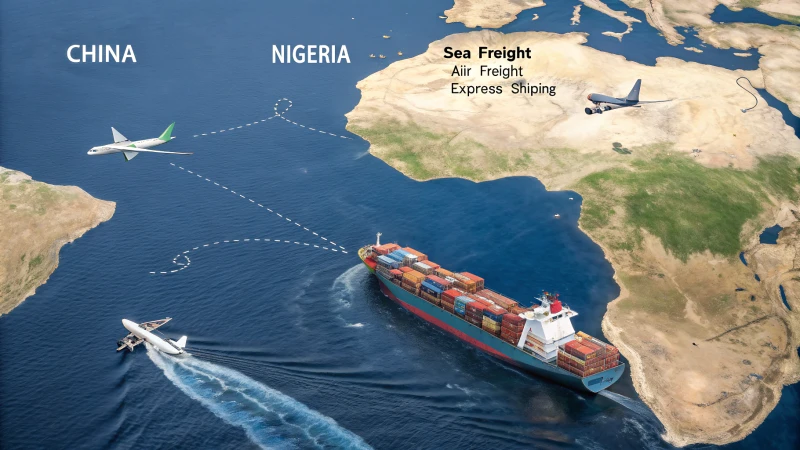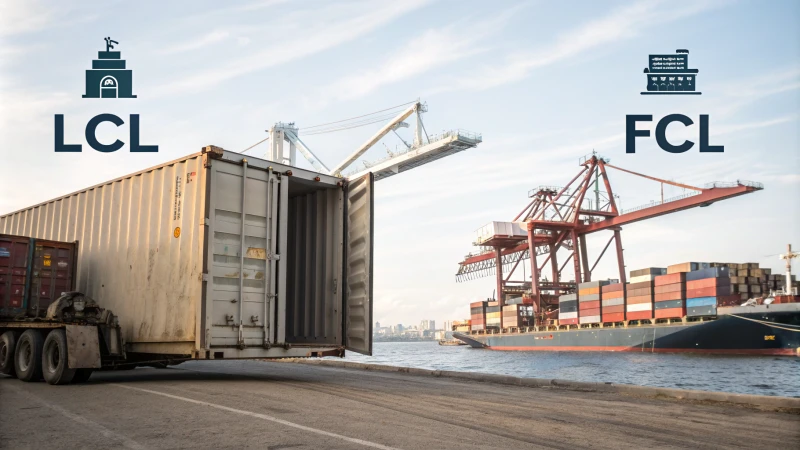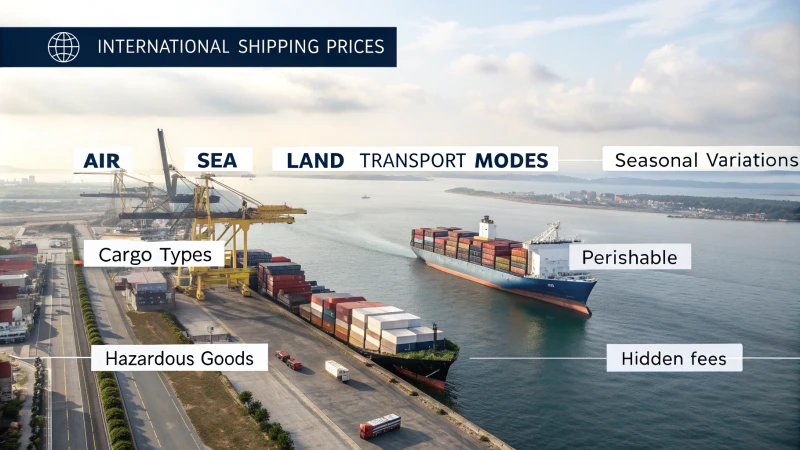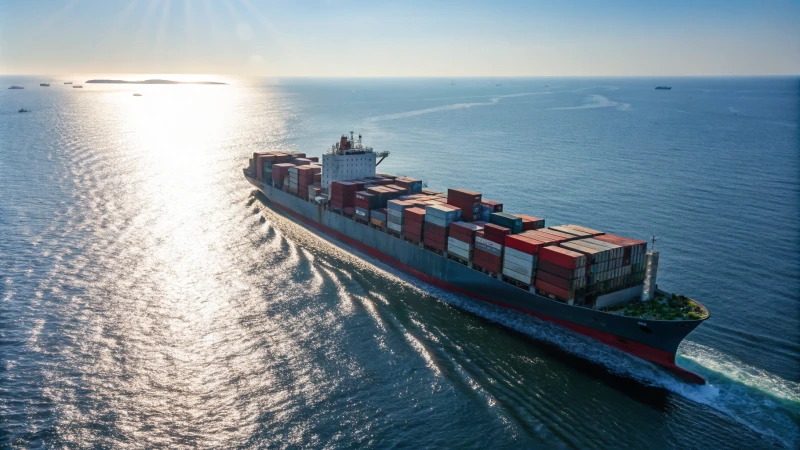Are you getting ready to bring goods from China to Nigeria? Trust me, it often feels really challenging to understand the complex details of shipping costs.
Shipping costs from China to Nigeria vary greatly. Transport method, container size and extra fees, influence these costs. Expect to spend from hundreds to thousands of dollars. Costs depend on various factors.
When I began importing electronics, I was surprised by how much shipping costs could change. Prices shifted like the stock market. Many factors influenced the costs, not just distance. During my first shipment, I nervously watched the costs increase. This experience showed me how important it is to know these variables.
In this blog post, I share insights on different shipping methods. Prices change with the seasons. I have some clever tips learned over the years. These ideas may help control freight expenses. Together, we simplify the process.
Shipping costs from China to Nigeria are always affordable.False
This claim is false; shipping costs vary widely and can be expensive.
The mode of transport affects shipping costs to Nigeria.True
True; different transport modes lead to significant variations in shipping expenses.
What shipping options can I choose from when importing from China to Nigeria?
Shipping goods from China to Nigeria feels confusing sometimes. I am here to simplify everything for you. Let's explore the different choices. You can find the best option for your business.
Shipping goods from China to Nigeria involves three main choices꞉ sea freight, air freight and express shipping. Each choice has different transit times and costs. Finding the right balance is very important for my business. Balancing these factors is crucial.

Grasping the various shipping methods is very important when operating a wholesale business like mine. I have experienced many situations. I wish to share the lessons learned on this journey.
When considering shipping options from China to Nigeria, businesses like mine need to weigh the pros and cons of each method. Here are the main shipping options available:
Sea Freight
Sea freight is one of the most popular methods for transporting large quantities of goods. It is cost-effective for bulk shipments, though it takes longer than air freight.
- Transit Time: Typically 20-40 days, depending on the route and port congestion.
- Cost: Generally lower than air freight, with prices often around $1,000-$2,500 per container, depending on size and distance.
This option is suitable for businesses that can afford to wait longer for their products. For example, if I order a large shipment of consumer electronics, sea freight could save significant costs compared to air shipping.
Explore more about sea freight options1
Air Freight
For time-sensitive shipments, air freight is the go-to option. It’s faster but also significantly more expensive.
- Transit Time: Usually 3-7 days.
- Cost: Prices can range from $5 to $10 per kilogram, depending on the airline and route.
This method is ideal for urgent shipments or valuable goods that need quick delivery. If I have a high-demand product that retailers need immediately, air freight might be my best bet.
Learn about air freight costs2
Express Shipping
Express shipping services offer even faster delivery than standard air freight, usually within 1-3 days. Companies like DHL and FedEx provide these services.
- Cost: Generally ranges from $10 to $20 per kilogram.
- Benefits: Includes tracking and door-to-door service, adding convenience for businesses.
Though more expensive, express shipping ensures that urgent shipments reach their destination quickly. For instance, I might consider this option during peak seasons when products are in high demand.
Discover express shipping benefits3
Comparison Table of Shipping Options
| Shipping Method | Transit Time | Cost (Approx.) | Best For |
|---|---|---|---|
| Sea Freight | 20-40 days | $1,000-$2,500/container | Bulk shipments |
| Air Freight | 3-7 days | $5-$10/kg | Urgent deliveries |
| Express Shipping | 1-3 days | $10-$20/kg | Time-sensitive goods |
Factors Affecting Shipping Costs
Several factors can affect the overall cost of shipping from China to Nigeria:
- Weight & Volume: Heavier and larger items incur higher fees.
- Fuel Prices: Fluctuations can impact shipping rates.
- Customs Duties: Import taxes can vary significantly based on the product type.
- Insurance: Opting for insurance on shipments can add to costs but offers peace of mind.
Understanding these elements will help me make informed decisions based on my business needs.
Get insights on customs duties4
By evaluating these shipping options thoroughly, businesses can optimize their logistics strategy and ensure timely delivery of goods from China to Nigeria.
Sea freight is the cheapest shipping option from China to Nigeria.True
Sea freight is generally more cost-effective for bulk shipments compared to air and express shipping options.
Express shipping guarantees delivery in 1-3 days.True
Express shipping services typically offer delivery within 1-3 days, making it the fastest option available.
How do LCL and FCL shipping costs compare?
Do you sometimes feel confused about choosing shipping options? Do you wonder which choice saves money? Let's explore costs in LCL and FCL shipping. Let's compare them to each other!
LCL (Less than Container Load) shipping suits smaller shipments. It saves money by sharing container space. FCL (Full Container Load) shipping suits larger shipments. Customers get direct transport benefits with FCL. Compare base rates to find the best choice. Also, check handling fees. Don't forget to look at transit times.

Understanding LCL and FCL Shipping
I have spent years in the busy world of import/export trade. I quickly learned the details of different shipping methods. At the start of my logistics journey, I discovered LCL (Less than Container Load) and FCL (Full Container Load) shipping. These two methods became crucial to my business, each serving a different role.
LCL is excellent for smaller shipments where your cargo might not fill a whole container. I first used LCL while importing gadgets for a local shop. Sharing a container helped save money and eased my budget. In contrast, FCL suits large shipments when I have enough items to fill a container; I enjoy not sharing space with other shipments.
Cost Comparison: LCL vs. FCL
Comparing LCL and FCL costs is important. I learned to consider many factors:
| Factor | LCL Cost Consideration | FCL Cost Consideration |
|---|---|---|
| Base Freight Rates | Charged per cubic meter (CBM) or weight | Flat rate for the entire container |
| Minimum Charges | Often includes a minimum charge regardless of size | No minimum, you pay for the entire container |
| Handling Fees | Additional fees for handling and consolidation | Lower handling fees since it's a full load |
| Transit Time | Longer due to multiple stops | Faster due to direct transport |
As shown in the table above, the base freight rates can vary significantly. Businesses must evaluate their specific shipment sizes to find the most cost-effective solution.
Additional Cost Factors
- Volume Discounts: Large businesses may find FCL cheaper due to bigger shipments.
- Seasonal Fluctuations: Prices change between peak and off-season; during holidays, I saw freight costs rise affecting both LCL and FCL rates.
- Destination Charges: FCL often has lower charges per unit; LCL can have higher per-unit costs because of extra handling.
Benefits and Drawbacks of Each Method
LCL
- Benefits: Perfect for smaller shipments, adaptable shipping schedules.
- Drawbacks: Longer travel times and higher damage risks due to much handling.
FCL
- Benefits: Quicker shipping with less handling, lowering damage risk.
- Drawbacks: High initial costs if the container isn't fully used.
I weighed these points in my decisions. I found that choosing based on your needs can save money and improve logistics.
Conclusion
Knowing how LCL and FCL shipping costs differ has improved my logistics operations. If you want to explore freight cost strategies, dive into shipping efficiency strategies5. Finding efficient shipping methods is always rewarding.
LCL shipping is cheaper for smaller shipments than FCL.True
LCL allows sharing container space, reducing costs for smaller cargo compared to the full rate of FCL.
FCL shipping guarantees faster transit times than LCL.True
FCL shipments are transported directly, avoiding multiple stops, which speeds up delivery compared to LCL's longer transit times.
What really affects the price of shipping goods internationally?
When I began understanding international shipping, I felt confused by everything that affected pricing. Many things impact the cost. For people like me in this business, clear knowledge of these elements is very important. Let's explore them together.
International shipping prices depend on several main factors. The method of transport affects the cost. This can be air, sea or land. Seasonal demand changes also play a role. Cargo characteristics like weight and size matter too. Extra fees, such as customs duties and insurance, add to the cost. Businesses really need to understand these elements. Costs can be managed more effectively this way.

Shipping goods internationally involves several factors that can significantly influence the overall cost. Understanding these can help businesses and individuals make informed decisions.
Modes of Transport
Different modes of transport offer varying pricing structures. For instance:
| Mode of Transport | Speed | Cost |
|---|---|---|
| Air Freight | Fast | High |
| Sea Freight | Slow | Low |
| Land Freight | Moderate | Moderate |
Air freight is typically more expensive due to speed, while sea freight is cheaper but slower. Choosing the right mode depends on urgency and budget constraints.
Seasonality
Shipping prices can fluctuate based on the season. Off-peak times may offer reduced rates. For example, shipping during the holiday season often incurs higher fees due to increased demand. Understanding seasonal trends can lead to significant cost savings.
Cargo Characteristics
The type, weight, and volume of cargo also play a crucial role in determining shipping costs. Heavier and bulkier items often attract higher fees.
- Weight: Heavier shipments increase costs due to fuel and handling.
- Dimensions: Oversized packages may incur additional charges.
Additional Fees
There are various fees that can affect total shipping costs:
- Customs Duties: Taxes imposed by the destination country.
- Insurance: Coverage for loss or damage during transit.
- Handling Fees: Charges for loading/unloading cargo.
It's essential to account for these potential additional costs when budgeting for international shipping.
Reducing Shipping Costs
There are strategies to minimize shipping expenses:
- Consolidate Shipments: Combine multiple packages into one shipment to save on costs.
- Negotiate Rates: Work with freight forwarders to secure better rates based on volume.
- Choose Off-Peak Times: Schedule shipments during off-peak seasons for lower rates.
Implementing these strategies can lead to more cost-effective shipping practices.
For a deeper dive into optimizing your international shipping strategies, check out our comprehensive guide on cost-saving techniques6.
Air freight is always more expensive than sea freight.True
Air freight costs are generally higher due to speed, while sea freight is cheaper but slower, making this claim true.
Shipping prices are unaffected by seasonal demand fluctuations.False
This claim is false as shipping prices often rise during peak seasons like holidays due to increased demand.
How can I reduce shipping costs when importing from China?
Exploring the world of importing feels confusing, especially with shipping costs involved. I have experienced this. I want to share practical strategies that truly helped me. These strategies could really assist you as well!
To lower shipping expenses when buying from China, simplify packaging. Pick cost-effective shipping options. Plan shipments during less busy times. Use freight forwarders for cheaper rates. Bargain for discounts based on the size of your orders.
To effectively reduce shipping costs when importing from China, consider the following strategies:
1. Choose the Right Shipping Method
Different shipping methods come with varying costs and delivery times.
Air freight is faster but typically more expensive, while sea freight is more economical but slower. Assess your needs to determine which method best fits your timeline and budget.
| Shipping Method | Cost Range | Delivery Time |
|---|---|---|
| Air Freight | High | 3-7 days |
| Sea Freight | Low | 20-40 days |
By selecting the appropriate shipping method based on urgency and cost, you can significantly reduce your expenses. For a deeper understanding of shipping methods7, explore various options available in the market.
2. Optimize Your Packaging
Efficient packaging can lead to substantial savings on shipping costs. Reducing the size and weight of your packages allows you to take advantage of lower freight rates. Consider the following:
- Use lightweight yet durable materials.
- Minimize package dimensions whenever possible.
- Combine shipments whenever it makes sense.
A study showed that optimizing packaging can reduce shipping costs by up to 30%. For insights on packaging optimization8, check out industry best practices.
3. Leverage Off-Peak Shipping Times
Shipping during off-peak seasons can lead to reduced costs. Freight rates often fluctuate based on demand, so timing your shipments strategically can save you money. Research historical trends and try to schedule imports during quieter periods.
4. Utilize Freight Forwarders
Working with a reputable freight forwarder can provide you with better rates and logistics management. They have established relationships with carriers and can negotiate lower prices on your behalf.
- Compare quotes from different freight forwarders to find the best deal.
- Look for specialized services that cater to your specific goods.
To understand more about the advantages of working with freight forwarders9, consider reaching out for personalized advice tailored to your business needs.
5. Take Advantage of Volume Discounts
If your business has regular import needs, negotiate volume discounts with your suppliers or carriers. Bulk shipments can lead to lower per-unit shipping costs, thus helping you maintain a competitive edge in pricing.
| Volume Tier | Discount Percentage |
|---|---|
| 1-10 units | 0% |
| 11-50 units | 5% |
| 51+ units | 10% |
Explore options for volume discounts10 to maximize your savings on shipping.
Conclusion
By implementing these strategies, I really reduced shipping costs when importing from China. It isn't only about cutting expenses; it's about keeping my business profitable and my customers satisfied.
Air freight is always the cheapest shipping option.False
This claim is false as air freight is typically more expensive than sea freight, depending on urgency and budget.
Optimizing packaging can reduce shipping costs by up to 30%.True
This claim is true; studies indicate that efficient packaging significantly lowers shipping expenses, potentially by 30%.
Conclusion
Explore the varying shipping costs from China to Nigeria based on methods like sea freight, air freight, and express shipping, along with tips to reduce expenses.
-
Discover detailed comparisons of various shipping methods and find the best option for your needs. ↩
-
Learn about air freight costs and transit times to make informed decisions for your shipments. ↩
-
Find out how express shipping can benefit your time-sensitive shipments from China. ↩
-
Understand customs duties and their impact on your shipping costs when importing from China. ↩
-
Gain access to strategies that enhance shipping efficiency and reduce overall logistics costs. ↩
-
Discover expert insights on how shipping costs are determined and ways to optimize them for your business needs. ↩
-
Clicking this link will provide you with expert insights on cost-effective shipping strategies tailored for businesses like yours. ↩
-
Discover how effective packaging can significantly lower your shipping costs and improve delivery efficiency. ↩
-
Find out how to negotiate better rates with freight forwarders to enhance your shipping efficiency and reduce costs. ↩
-
Learn how taking advantage of bulk shipping can lead to significant discounts and savings for your business. ↩




